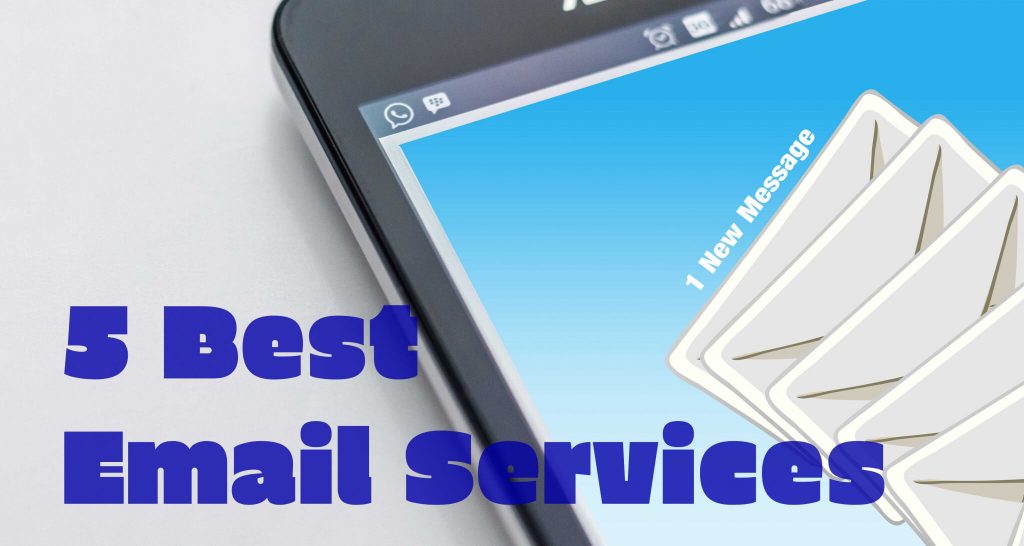Electronic mail or e-mail is a method of exchanging messages between people using electronic devices. Invented by Ray Tomlinson, email first entered limited use in the 1960s and by the mid-1970s had taken the form now recognized as email. Email operates across computer networks, which today is primarily the Internet. Some early email systems required the author and the recipient to both be online at the same time, in common with instant messaging. Today’s email systems are based on a store-and-forward model. Email servers accept, forward, deliver, and store messages.
ProtonMail
ProtonMail is an end-to-end encrypted email service founded in 2014 at the CERN research facility by Andy Yen, Jason Stockman, and Wei Sun. It uses client-side encryption to protect email contents and user data before they are sent to ProtonMail servers, unlike other common email providers such as Gmail and Outlook.com. User can access the services through a webmail client, the Tor network, or dedicated iOS and Android apps.
ProtonMail is run by Proton Technologies AG, a company based in the Canton of Geneva, and its servers are located at two locations in Switzerland, outside of US and EU jurisdiction. The service received initial funding through a crowdfunding campaign. Also, the default account setup is free, and the service is sustained by optional paid services. As of January 2017, ProtonMail had over 2 million users, and grew to over 5 million by September 2018 and over 10 million by the end of 2018. Initially invitation-only, ProtonMail opened up to the public in March 2016.
Gmail
Gmail is a free email service. Google is the developer of Gmail. Users can access Gmail on the web and using third-party programs that synchronize email content through POP or IMAP protocols. Gmail started as a limited beta release on April 1, 2004 and ended its testing phase on July 7, 2009.
Google’s mail servers automatically scan emails for multiple purposes. Including to filter spam and malware, and to add context-sensitive advertisements next to emails. This advertising practice has been significantly criticized by privacy advocates due to concerns over unlimited data retention, ease of monitoring by third parties, users of other email providers not having agreed to the policy upon sending emails to Gmail addresses, and the potential for Google to change its policies to further decrease privacy by combining information with other Google data usage. The company has been the subject of lawsuits concerning the issues.
Google has stated that email users must “necessarily expect” their emails to be subject to automated processing and claims that the service refrains from displaying ads next to potentially sensitive messages, such as those mentioning race, religion, sexual orientation, health, or financial statements. In June 2017, Google announced the upcoming end to the use of contextual Gmail content for advertising purposes, relying instead on data gathered from the use of its other services.
Outlook
Microsoft Outlook is a personal information manager from Microsoft, available as a part of the Microsoft Office suite. Primarily an email application, it also includes a calendar, task manager, contact manager, note taking, journal, and web browsing.
User can use it as a stand-alone application, or can work with Microsoft Exchange Server and Microsoft SharePoint Server for multiple users in an organization. Such as shared mailboxes and calendars, exchange public folders, SharePoint lists, and meeting schedules. Microsoft has also released mobile applications for most mobile platforms, including iOS and Android. Developers can also create their own custom software that works with Outlook and Office components using Microsoft Visual Studio. In addition, Windows Phone devices can synchronize almost all Outlook data to Outlook Mobile.
Yahoo Mail
Yahoo! Mail is an email service launched in 1997 through the American parent company Yahoo!. Yahoo Mail provides four different email plans: three for personal use (Basic, Plus, and Ad Free) and another for businesses. By December 2011, Yahoo! Mail had 281 million users, making it the third largest web-based email service in the world. Since 2015, its web mail client also supports managing non-Yahoo e-mail accounts.
The traditional “Yahoo! Mail Classic” preserved the availability of their original 1997 interface until July 2013 in North America. A 2005 version included a new Ajax interface, drag-and-drop, improved search, keyboard shortcuts, address auto-completion, and tabs. However, it removes other features such as column widths and one click delete-move-to-next. In October 2010, Yahoo! released a beta version of Yahoo! Mail, which included improvements to performance, search, and Facebook integration. In May 2011, this became the default interface. Their current Webmail interface was introduced in 2017.
Zoho
Zoho Mail is an email platform that offers a mixture of ad-free, clean, minimalist interface and powerful features for business and professional use.
Experience a fast, clean, Webmail that has powerful features matching or even superior to those you will find in desktop email clients. Immediately control of your inbox and get the freedom you need from tedious software upgrades.
Zoho Mail suite has Zoho Docs. This means your team can create, collaborate, and edit text, presentation as well as spreadsheet documents with the help of the most sophisticated online editors. You will experience faster work and better productivity with your online office.




